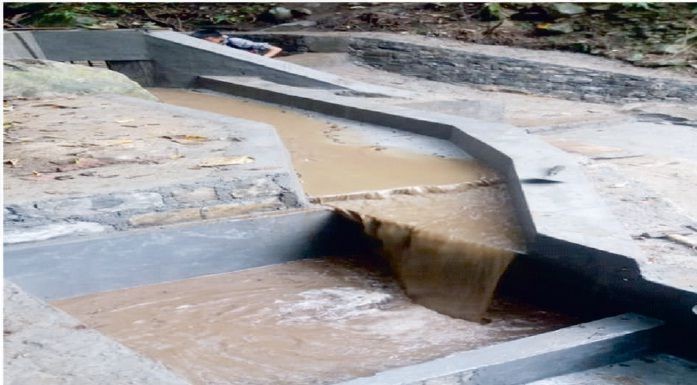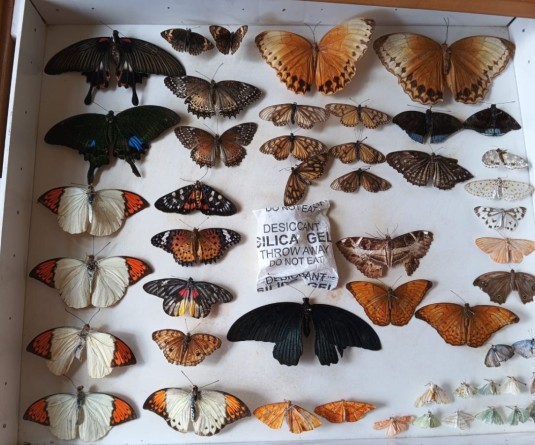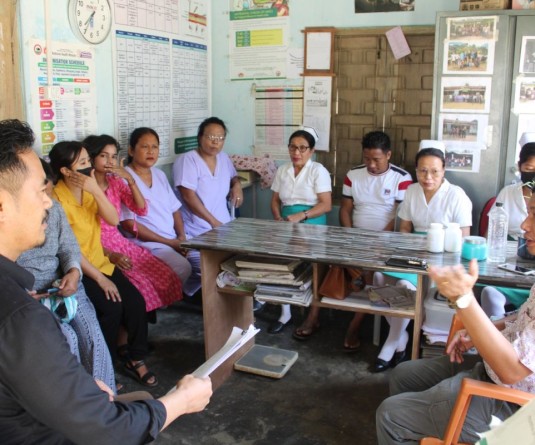Langjingkuh Minor Irrigation Project being implemented by the Water Resources Department at Lazanger Village, Kiphire. (Photo Courtesy: Water Resources Department Nagaland’s AAR 2022-23)

Ground Water dominates MI landscape across India, Surface Water in Nagaland
Morung Express News
Dimapur | August 27
There were 19,455 minor irrigation (MI) schemes in Nagaland as per the latest Sixth Census of MI Schemes Report with reference year 2017-18, released by the Union Ministry of Jal Shakti, Department of Water Resources, River Development and Ganga Rejuvenation on August 26.
There is an increase of 13.7% in the 6th MI census as compared to the 17,106 schemes in the 5th MI census in Nagaland, with reference year 2013-14, it noted.
According to the report, the 19,455 MI schemes in Nagaland comprise 35 (0.2%) ground water (GW) schemes, while the rest, 19,420 (99.8%), are surface water (SW) schemes.
The Water Resources Department implements the MI schemes and also undertakes the census in Nagaland.
Nagaland's status is the opposite of the all-India scenario, where out of 23.14 million MI schemes reported, 21.93 million schemes (94.8%) are GW and 1.21 million (5.2%) are SW schemes.
Nationally, there was an increase of about 1.42 million in MI schemes during the 6th MI census as compared to the 5th census, and both GW and SW schemes have increased by 6.9% and 1.2%, respectively.
A major share of minor irrigation schemes in India belongs to the private sector.
GW schemes comprise dugwells, shallow tube wells, medium tube wells, and deep tube wells, while surface flow and surface lift schemes are the main components of SW schemes.
Nagaland’s status
In Nagaland, as per the 6th Census, there was a decline of 12.5% (5) in GW schemes, while SW schemes increased by 13.8% (2,354).
The report further stated that out of 19,455 MI schemes, the majority, i.e. 54.3% (10,563), are owned by groups of farmers, while 44.2% (8,607) schemes are owned by individual farmers. Just 285 MI schemes, or 1.5%, were publicly owned.
Among the 35 GW schemes, 77.1% (27) schemes were owned by groups of farmers, whereas among the 19,420 SW schemes, 54.2% (10,536) were owned by groups of farmers. This status is indicative of individual farmers/groups of farmers getting maximum benefit from MI schemes, the report notes.
Out of the 8,607 individually owned MI schemes, based on the holding size of the owner, small and marginal farmers (having less than 2 hectares) own a share of 48.7% (4,190), while the rest of the 51.3% of schemes were owned by semi-medium farmers to big farmers with holding size more than 2 hectares, the report adds.
Meanwhile, the census also collected data on the source of finance for the MI schemes owned by individual farmers and found that out of 8,607 individually owned schemes, 68.1% (5,861) have a single source of finance, while 31.9% (2,746) have more than one source of finance.
Further, the census revealed that out of the total number of 19,455 MI schemes, 91.8% (17,852) were 'in use', 7.3% (1,418) were 'temporarily not in use', and only 0.9% (185) were 'permanently not in use' schemes.
The 1,418 'temporarily not in use' schemes comprised of 3 GW and 1,415 SW schemes.
All these underutilised were SW schemes and the major factor contributing were break-down of channels, siltation of canal/storage, 'less discharge of water', mechanical breakdown, non-availability of adequate power and other reasons.
MI Census
Meanwhile, an official release from Ministry of Jal Shakti informed that with the objective of providing effective planning and policy making in the sector, the Government of India has been conducting census of minor irrigation schemes.
The previous five censuses were conducted with reference year 1986-87, 1993-94, 2000-01, 2006-07 and 2013-14 respectively.
The 6th MI census with reference year 2017-18 was completed in 32 States and Union Territories but the work was delayed due to the COVID-19 pandemic, it added.
At national level, Uttar Pradesh had the largest number of MI schemes in the country followed by Maharashtra, Madhya Pradesh and Tamil Nadu.
Leading States in GW schemes were Uttar Pradesh, Maharashtra, Madhya Pradesh, Tamil Nadu and Telangana. In SW schemes Maharashtra, Karnataka, Telangana, Odisha and Jharkhand have the highest share.




.jpg)
